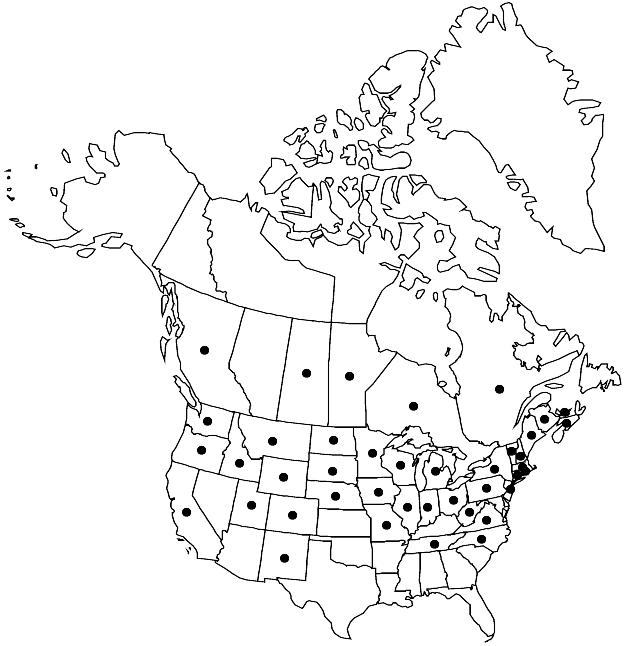Armoracia rusticana
Oekon. Fl. Wetterau 2: 426. 1800.
Roots fusiform or cylindrical, fleshy or woody. Stems 5–12 (–20) dm. Basal leaves: petiole to 60 cm (broadly expanded basally); blade broadly oblong, oblong-lanceolate, or ovate, (10–) 20–45 (–60) cm × (30–) 50–120 (–170) mm, margins usually coarsely crenate, rarely pinnatifid. Cauline leaves: proximal shortly petiolate, blade oblong to linear-oblong (lobed), smaller than basal, margins pinnatifid or pinnatisect; distal sessile or shortly petiolate, blade linear to linear-lanceolate, base cuneate or attenuate, margins usually serrate or crenate, rarely entire. Racemes to 40 cm. Fruiting pedicels ascending, 8–20 mm. Flowers: sepals 2–4 mm; petals obovate or oblanceolate, 5–7 (–8) mm, claw to 1.5 mm; filaments 1–2.5 mm; anthers 0.5–0.8 mm. Fruits (rarely produced), 4–6 mm; style obsolete or to 0.5 mm; stigma well-developed. Seeds compressed (often not produced, rarely to 4 per locule). 2n = 32.
Phenology: Flowering Mar–Jul.
Habitat: Fields, moist stream banks, roadsides, ditches, disturbed sites, open woods, along railroads, shallow ponds, marshes, waste places
Elevation: 0-1100 m
Distribution

Introduced; B.C., Man., N.B., N.S., Ont., P.E.I., Que., Sask., Calif., Colo., Conn., Idaho, Ill., Ind., Iowa, Maine, Mass., Mich., Minn., Mo., Mont., Nebr., N.H., N.J., N.Mex., N.Y., N.C., N.Dak., Ohio, Oreg., Pa., R.I., S.Dak., Tenn., Utah, Vt., Va., Wash., W.Va., Wis., Wyo., Europe, Asia, also nearly worldwide
Discussion
Armoracia rusticana has been widely cultivated for about 2000 years for its fleshy roots that are grated to produce the pungent horseradish sauce. The plant is also a noxious weed that is very difficult to eradicate, even tiny root fragments are capable of regenerating new plants.
Selected References
None.
Lower Taxa
"elongated" is not a number."thick" is not a number."dm" is not declared as a valid unit of measurement for this property."dm" is not declared as a valid unit of measurement for this property.
